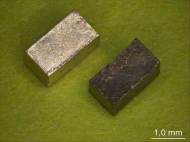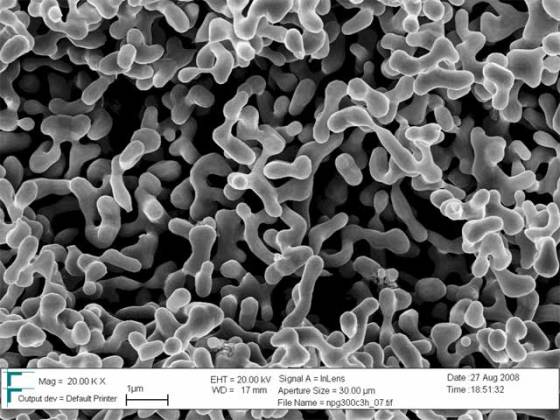New nanomaterial can change its strength nearly at the touch of a button
 The material properties of metals and alloys are set once and for all during production, and it forces engineers to compromise during the selection of the mechanical properties of a material. A group of researchers came up with a material which is capable to change its strength nearly at the touch of a button. The research could lead to future intelligent materials with the ability of self healing, smoothing out flaws autonomously.
The material properties of metals and alloys are set once and for all during production, and it forces engineers to compromise during the selection of the mechanical properties of a material. A group of researchers came up with a material which is capable to change its strength nearly at the touch of a button. The research could lead to future intelligent materials with the ability of self healing, smoothing out flaws autonomously.
Jörg Weißmüller, a materials scientist at both the Technical University of Hamburg and the Helmholtz Center Geesthacht, has carried out research on this groundbreaking development, working in cooperation with colleagues from the Institute of Metal Research in Shenyang, China.
“This is a point where significant progress is being made. For the first time we have succeeded in producing a material which, while in service, can switch back and forth between a state of strong and brittle behavior and one of soft and malleable. We are still at the fundamental research stage but our discovery may bring significant progress in the development of so-called smart materials”, said Weißmüller.
In order to produce this innovative material, material scientists used a relatively simple process – corrosion. The metals, typically precious metals such as gold or platinum, are placed in an acidic solution. As a consequence of the start of the corrosion process, minute ducts and holes are formed in the metal, thus creating pores. The pores are filled with a conductive liquid (for example a simple saline solution or a diluted acid) and a true hybrid material of metal and liquid is thus created.
After being triggered by an electric signal, the material properties change within seconds. As ions are dissolved in the liquid, the surfaces of the metal can be electrically charged. In other words, the mechanical properties of the metallic part are changed by the application of an electric potential in the liquid part. The effect can be traced back to a strengthening or weakening of the atomic bonds in the surface of the metal when extra electrons are added to (or withdrawn from) the surface atoms.
Since the material can create electric signals spontaneously and selectively, it is capable to strengthen the matter in regions with local stress concentration. This would enable prevention or healing of cracks incurred by stress. According to researchers, the strength of the material can be as much as doubled when required. On the other hand, the material can be switched to a less rigid state which can be more damage tolerant, energy-absorbing and flexible.
For more information read the article published in the journal Science names: “A Material with Electrically Tunable Strength and Flow Stress”.










Leave your response!